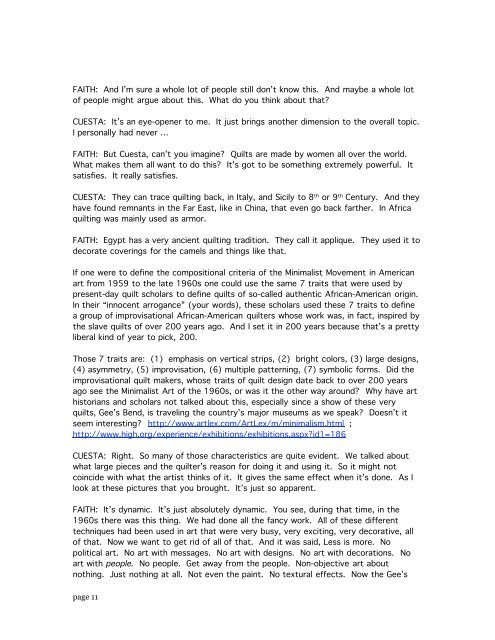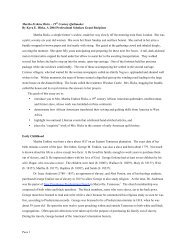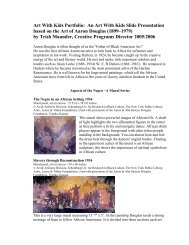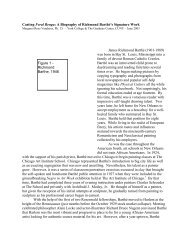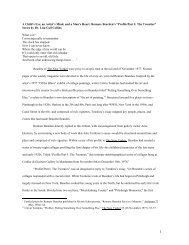Cuesta Benberry - The Anyone Can Fly Foundation, Inc.
Cuesta Benberry - The Anyone Can Fly Foundation, Inc.
Cuesta Benberry - The Anyone Can Fly Foundation, Inc.
You also want an ePaper? Increase the reach of your titles
YUMPU automatically turns print PDFs into web optimized ePapers that Google loves.
FAITH: And I’m sure a whole lot of people still don’t know this. And maybe a whole lotof people might argue about this. What do you think about that?CUESTA: It’s an eye-opener to me. It just brings another dimension to the overall topic.I personally had never …FAITH: But <strong>Cuesta</strong>, can’t you imagine? Quilts are made by women all over the world.What makes them all want to do this? It’s got to be something extremely powerful. Itsatisfies. It really satisfies.CUESTA: <strong>The</strong>y can trace quilting back, in Italy, and Sicily to 8 th or 9 th Century. And theyhave found remnants in the Far East, like in China, that even go back farther. In Africaquilting was mainly used as armor.FAITH: Egypt has a very ancient quilting tradition. <strong>The</strong>y call it applique. <strong>The</strong>y used it todecorate coverings for the camels and things like that.If one were to define the compositional criteria of the Minimalist Movement in Americanart from 1959 to the late 1960s one could use the same 7 traits that were used bypresent-day quilt scholars to define quilts of so-called authentic African-American origin.In their “innocent arrogance” (your words), these scholars used these 7 traits to definea group of improvisational African-American quilters whose work was, in fact, inspired bythe slave quilts of over 200 years ago. And I set it in 200 years because that’s a prettyliberal kind of year to pick, 200.Those 7 traits are: (1) emphasis on vertical strips, (2) bright colors, (3) large designs,(4) asymmetry, (5) improvisation, (6) multiple patterning, (7) symbolic forms. Did theimprovisational quilt makers, whose traits of quilt design date back to over 200 yearsago see the Minimalist Art of the 1960s, or was it the other way around? Why have arthistorians and scholars not talked about this, especially since a show of these veryquilts, Gee’s Bend, is traveling the country’s major museums as we speak? Doesn’t itseem interesting? http://www.artlex.com/ArtLex/m/minimalism.html ;http://www.high.org/experience/exhibitions/exhibitions.aspx?id1=186CUESTA: Right. So many of those characteristics are quite evident. We talked aboutwhat large pieces and the quilter’s reason for doing it and using it. So it might notcoincide with what the artist thinks of it. It gives the same effect when it’s done. As Ilook at these pictures that you brought. It’s just so apparent.FAITH: It’s dynamic. It’s just absolutely dynamic. You see, during that time, in the1960s there was this thing. We had done all the fancy work. All of these differenttechniques had been used in art that were very busy, very exciting, very decorative, allof that. Now we want to get rid of all of that. And it was said, Less is more. Nopolitical art. No art with messages. No art with designs. No art with decorations. Noart with people. No people. Get away from the people. Non-objective art aboutnothing. Just nothing at all. Not even the paint. No textural effects. Now the Gee’spage 11


